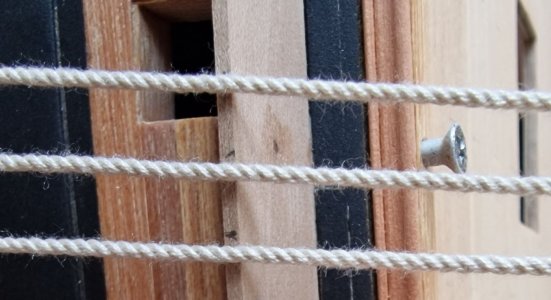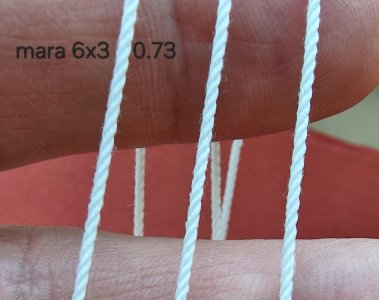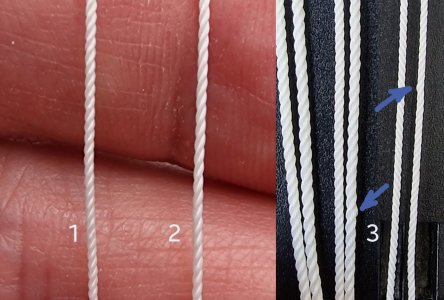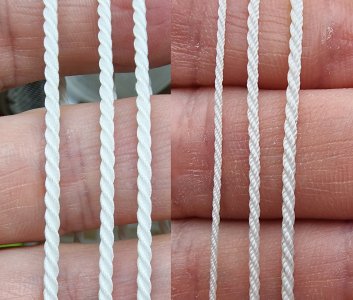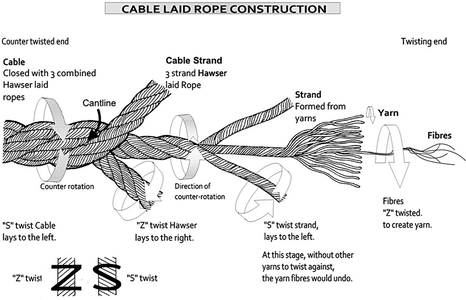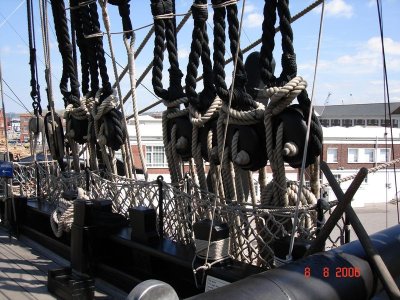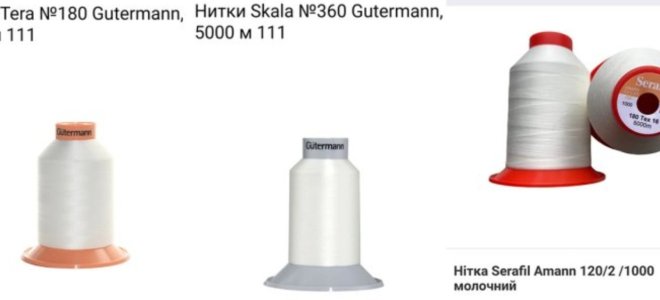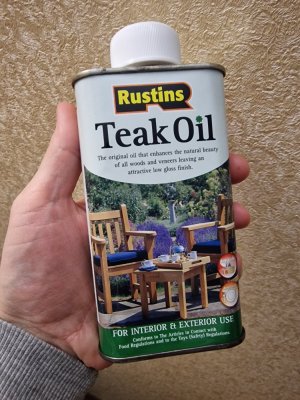Part 16
05.2024
Ropemaker (a device for creating ropes and cables).
So, we’re approaching the major topic of rigging production.
First, let’s go over a bit of theory to give beginners an understanding of what a rope is, what a cable is, the differences between them, and why they’re needed.
You can read more about this at
the link, but briefly...
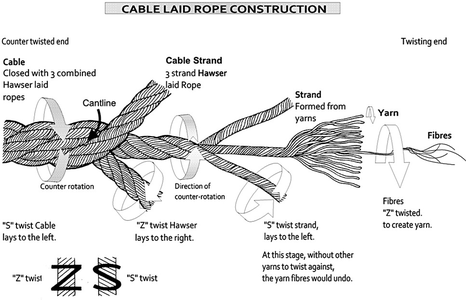

Тросы - (это бугучий такелаж) создаються с прядей "S" скрутки (левой намотки) из множество нитей.
Канаты - (стоячий такелаж) создаються с Тросов "Z" скрутки (правой намотки) из трех Тросов.
Сables (this is the running rigging) are made from strands of "S" twist (left-hand twist) from many fibers.
Ropes (this is the standing rigging) are made from cables "Z" twist (right-hand twist) from 3 cables.
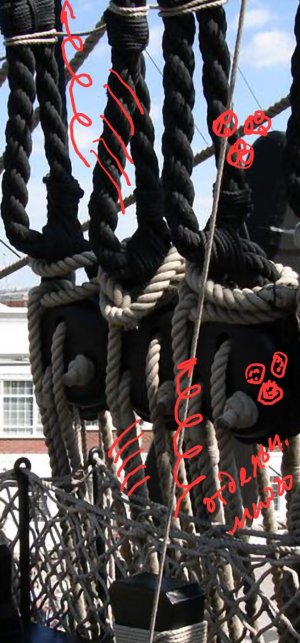

This is the most basic information you need to know. And to create such ropes and cables, you need a device for this.
Now I will show the operating principle of a vertical rope maker for three strands. This is sufficient for almost all types of ropes and cables.
The principle is very simple. There are three identical gears that will rotate the winding hooks; and one central (driving) gear that connects them.
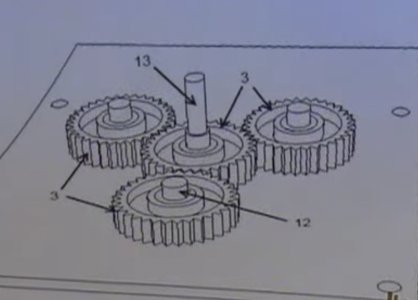
Again, there is a lot of theory and various manufacturing options on the internet... I am posting my version, which is fully operational... maybe this post will help someone make a similar one.
So, I glued the bottom wall from two plywood plates. In the lower plate of this wall (on the left in the photo), there are holes for the shafts of the gears (hooks), and in the second plate (on the right in the photo), there are holes for the bearings.
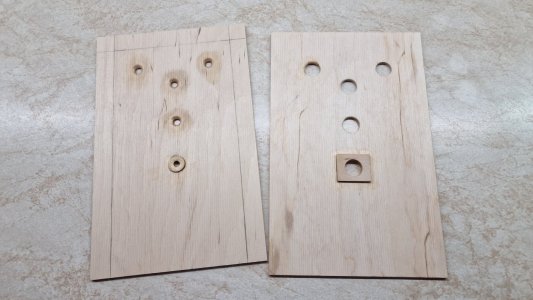
Then, on this already glued wall (made from the two previously mentioned plates), I glued beams around the perimeter. A plywood plate (shown in the photo below to the right, next to the screwdriver) will close everything with screws, so the device can be disassembled by unscrewing the screws.
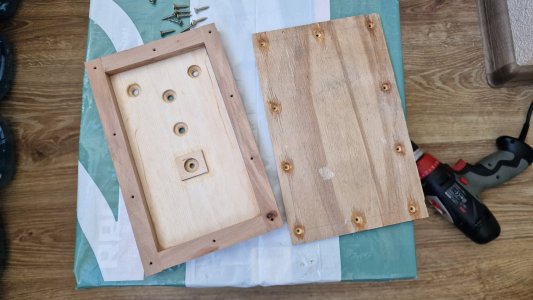
Then, the bearings are inserted into the inserts, and the shafts of the gears are placed into them. I have four identical gears: three for the hooks and the fourth just connects them. The lower one is the drive gear, which is slightly different, but that’s not critical, and a motor will be connected to it. The main point is that the three gears for the hooks must be identical; this is the most important part.
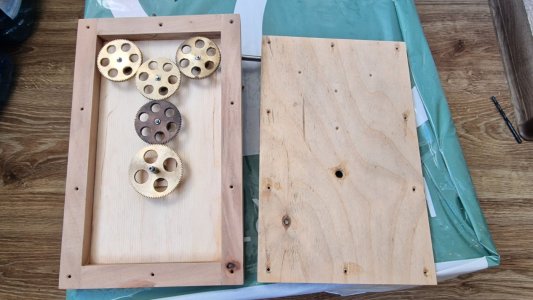
After lubricating the bearings and teeth with oil, everything is tightened, and one section is ready.
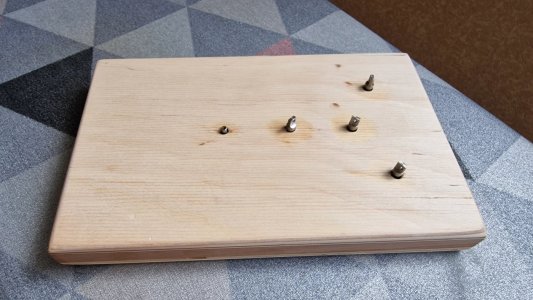
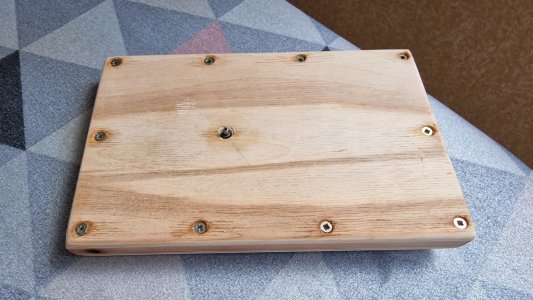
Now, assembling the motor compartment. For this, I built a sturdy box that will hold the motor.
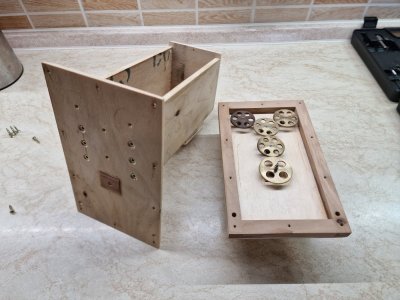
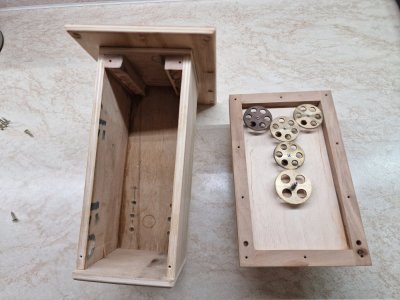
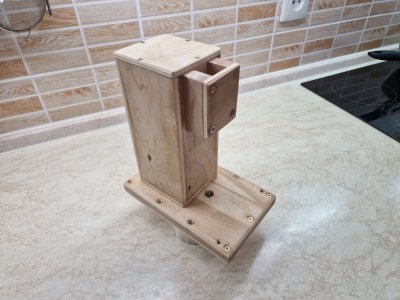
I secured the hooks to the working three axes.
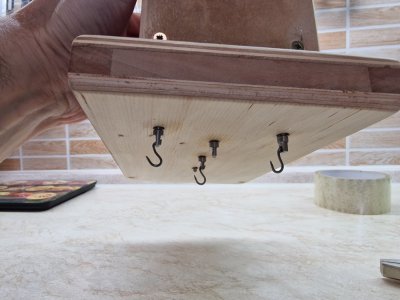
I connected the axis of the driving gear to the motor axis using a special adapter, which is already secured in its place in the holding box.
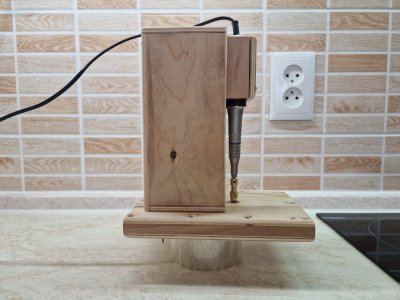
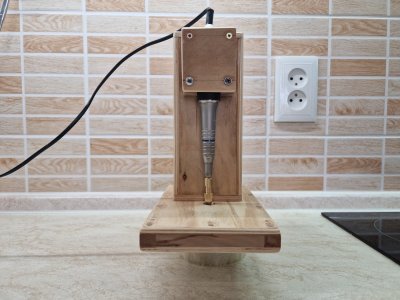
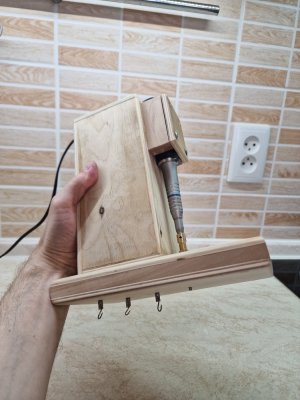
The motor is controlled by a pedal, which activates it when pressed, making it very convenient and controllable. There is a speed regulator and a reverse function, which is important if you need to wind in both directions.
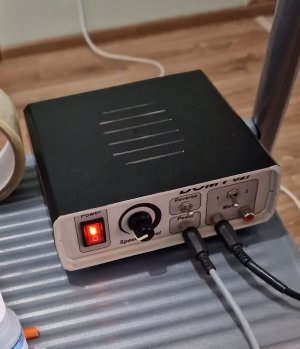
The rope machine is secured to a regular door with two screws screwed into its edge.
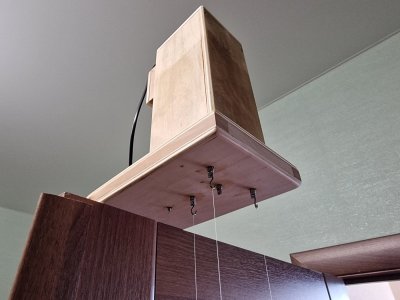
This way, the rope machine is held very securely and can also be easily fixed to any other door.
 !!!
!!!
I tie the lower parts of the threads to a can with hooks, into which I pour a specific weight depending on the thickness of the rope, i.e., the number of threads. The convenience is that there's no need to look for many different weights. I just weigh it once, mark the increments, and then pour the required amount without changing the container. The hooks on the weight are not one common one but three, like the ones on top. However, they are not movable. It’s important to try to evenly catch the thread on the hooks while keeping it taut to avoid sagging, as these sagging threads will lead to defects in the form of lumps. All three of these strands (with an n number of threads) should be of equal length. When in tension, the weight should be vertical, which indicates that all strands are of the same length.
During winding, the degree of this winding is very important. If it’s weak, the rope or cord will not be tightly wound, which looks unattractive and is incorrect. If it’s overly wound, lumps may form, or the thread may even break. Ideally, it should be 10-12%. That is, during winding, the weight should rise by these percentages from the original length. My total length was 1.5 meters, so the weight should rise by 15-16 cm. You can try up to 15% since the characteristics of the threads vary, but definitely do not exceed 15%, as lumps will definitely form.
Another point: the more threads in a strand, the higher the risk of these lumps appearing, as it is impossible to achieve equal tension across all threads during preparation, and loosely tensioned threads may cause these lumps.
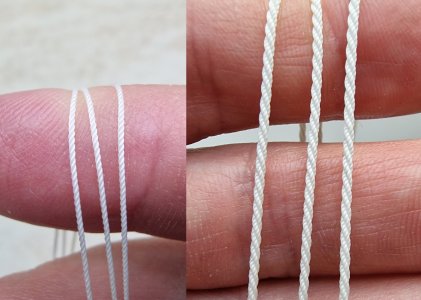
Here are samples of ropes and cords.
Next, I will talk about winding mistakes in rigging, which threads are better to use, and much more...
P.S. I created a separate thread for this topic so that people can easily find information about it.
Creating ropes and cables, painting rigging, rope-making machine by Serikoff.
...



























